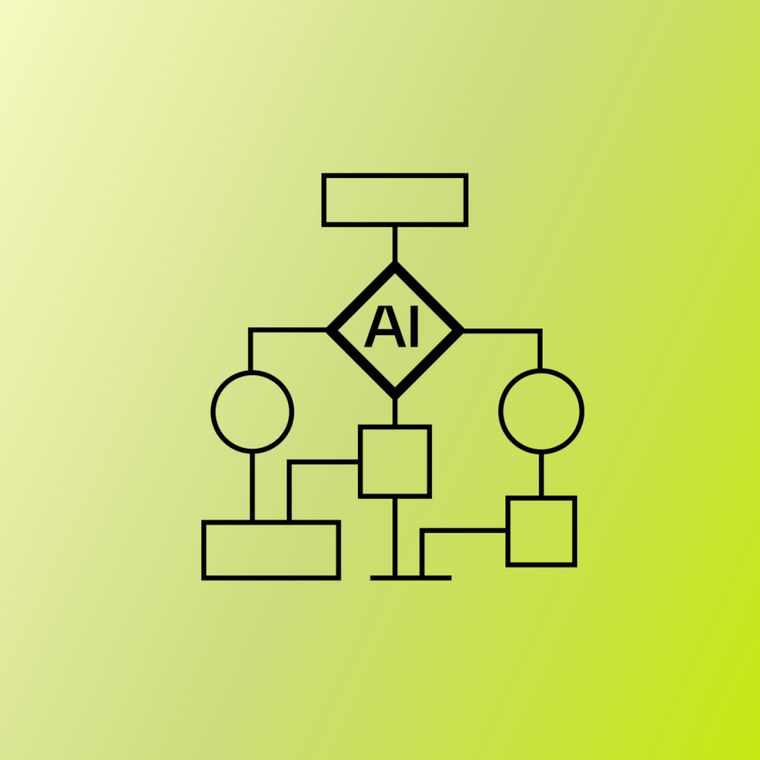Cost-Effective Strategies for Threat Detection in Transportation
Adopt cost-effective strategies for threat detection in transportation to secure logistics, protect assets, and ensure service continuity.
September 9, 2025
In August 2024, a cybersecurity incident forced Pittsburgh Regional Transit to shut down its website and real-time tracking systems, highlighting the growing cyber risks facing transportation infrastructure.
Sophisticated threat actors are increasingly targeting transit agencies and supply chain operators, exploiting vulnerabilities in operational technology (OT) that governs everything from vehicle movement to passenger communications. At the same time, transportation organizations must comply with a complex and evolving landscape of cybersecurity regulations across maritime, aviation, and surface sectors, all while managing limited resources.
That said, this article presents five cost-effective strategies to help transportation agencies detect and mitigate cyber threats, strengthening both regulatory compliance and operational security.
Why Threat Detection Matters in Transportation Operations
Transportation cybersecurity failures create immediate operational consequences affecting passenger safety, supply chain continuity, and critical infrastructure operations. When ransomware hits port systems or phishing attacks compromise air traffic networks, operations halt across entire regions.
The sector's critical infrastructure designation triggers mandatory federal reporting for security incidents. Attacks against industrial control systems and Supervisory Control and Data Acquisition (SCADA) networks managing real-time operations have immediate physical consequences that extend beyond traditional IT disruptions.
What Makes Transportation Infrastructure a Strategic Target
Transportation companies are prime targets for advanced persistent threats because of their global importance and operational complexity. Unlike centralized enterprises, transportation networks span vast geographies, creating multiple opportunities for cybercriminals.
Critical Infrastructure Dependencies
Interconnected systems heighten the risk in the transportation industries. Maritime shipping connects with rail and trucking through digital platforms, meaning a single cyberattack can disrupt entire supply chains. In ports, a ransomware incident can freeze customs and cargo handling, where pausing operations for incident response is rarely possible.
Foreign Technology Risks
Reliance on foreign equipment and platforms like LOGINK introduces security gaps. Threat actors can pivot from email compromises into operational systems, using malware and lateral movement to remain undetected.
Regulatory Pressure
Operators face overlapping mandates from the Coast Guard, TSA, FAA, and CISA. Meeting diverse security controls while avoiding misconfigurations is challenging, and errors often enable phishing or social engineering attacks.
Why Traditional Security Approaches Fall Short
Traditional email security strategies often fail to address the unique operational constraints of transportation. Signature-based detection cannot protect against zero-day attacks targeting critical infrastructure.
Transportation companies monitor vessel tracking systems, air traffic networks, rail signaling, and cargo equipment across vast areas. Legacy secure email gateways generate excessive false positives creating alert fatigue. Active scanning disrupts real-time operations or triggers false alarms in safety-critical systems prioritizing reliability over security.
Let's explore practical approaches that transportation organizations can implement to enhance threat detection capabilities while managing both regulatory requirements and operational constraints effectively.
1. Leverage Government Cybersecurity Frameworks for Unified Compliance
CISOs in transportation face an increasingly complex regulatory landscape, with the Coast Guard, TSA, FAA, and CISA each enforcing cybersecurity requirements. Managing these obligations separately leads to duplication, high costs, and inconsistent controls. For organizations operating across multiple modes of transport, fragmented compliance becomes both inefficient and risky.
AI-enabled governance frameworks provide a path forward. The NIST Cybersecurity Framework offers scalable guidance that can be adapted across sectors, helping organizations streamline documentation, audits, and reporting. By establishing a single cybersecurity coordinator role, transit operators unify compliance activities under one governance model, eliminating redundant processes while ensuring all requirements are met.
This approach turns compliance into a strategic advantage. Leveraging existing investments, such as email threat protection and account takeover defense, across frameworks reduces administrative burden while enhancing security. For CISOs, unified compliance provides cost savings, simplifies oversight, and ensures consistent defenses against advanced threats while meeting every agency mandate.
2. Implement Passive Operational Technology Network Monitoring
Operational technology environments such as air traffic control, rail signaling, and port cargo systems operate around the clock, leaving no room for downtime. Traditional active scans introduce risk of disruption, forcing CISOs to choose between visibility and stability. This tradeoff leaves blind spots that attackers can exploit.
Passive monitoring solves the challenge by observing traffic silently. Sensors decode industrial protocols and capture SCADA communications without injecting packets, enabling comprehensive asset discovery while protecting uptime. By establishing behavioral baselines, AI detects anomalies like unusual port-to-port traffic or unauthorized access attempts.
When integrated into a SIEM, passive telemetry enriches enterprise visibility, correlating OT signals with identity and email threats. For CISOs, this unified perspective enables faster detection of lateral movement while preserving operational safety. The result is resilient infrastructure: threats are identified before they escalate, without compromising availability in mission-critical environments.
3. Establish Coordinated Supply Chain Risk Assessment Programs
Transportation networks depend on thousands of vendors, from logistics software providers to port operators. This interconnectedness magnifies risk: a single vendor email compromise can cascade across maritime, aviation, and surface systems. Without standardized oversight, vendor assessments become inconsistent, costly, and prone to gaps.
AI-driven supply chain programs address these challenges. Frameworks like NIST 800-161 standardize evaluations across all vendors, ensuring that every partner is assessed against the same security criteria. Embedding this into procurement workflows creates a centralized process that eliminates redundant evaluations and accelerates contracting.
Continuous monitoring enhances oversight by tracking exposures such as leaked credentials or unpatched systems in real time. Integrating these insights into vendor contracts enforces accountability and strengthens resilience across the ecosystem. Additionally, coordinated supply chain programs reduce assessment costs while delivering a clear view of third-party risk, helping protect against cascading attacks across critical transportation infrastructure.
4. Deploy AI-Enhanced Detection for Maritime Behavioral Analysis
Maritime operations generate massive amounts of telemetry, from vessel tracking to cargo system logs. Traditional monitoring struggles to process this volume, allowing state-sponsored adversaries to evade detection with stealthy tactics. CISOs need intelligent systems that cut through noise and surface true risks.
AI-enhanced behavioral analysis delivers that capability. By learning normal communication patterns across port operations, cargo workflows, and vessel systems, AI models quickly identify anomalies such as irregular logins, unusual cargo transactions, or sudden spikes in data transfer. This allows early detection of business email compromise, insider misuse, and spear-phishing campaigns tailored to maritime targets.
Deep learning reduces false positives by correlating signals across email, operational, and communication systems. Analysts focus on verified threats rather than drowning in alerts. Also, AI-driven maritime detection strengthens defenses against nation-state actors while improving efficiency, enabling teams to respond decisively without being overwhelmed.
5. Create Cross-Agency Regulatory Coordination Programs
Transportation companies must comply with requirements from multiple regulators simultaneously. The Coast Guard, TSA, FAA, and CISA each enforce cybersecurity mandates, often with overlapping objectives and conflicting timelines. Managing these obligations separately forces duplicate audits and creates compliance fatigue for already strained teams.
Cross-agency coordination simplifies this complexity. By mapping shared requirements and consolidating documentation, organizations eliminate redundancies. Master calendars align deadlines across agencies, while integrated governance ensures that the same security controls satisfy multiple mandates. For example, deploying email security under TSA requirements can also address Coast Guard or FAA expectations.
AI-enabled compliance tools further enhance efficiency by automating reporting and highlighting overlapping tasks. For CISOs, coordinated programs reduce administrative costs, accelerate audit readiness, and ensure consistent protections across transportation environments. Instead of diverting resources into redundant compliance work, security teams can focus on safeguarding operations against phishing, social engineering, and advanced persistent threats.
How Abnormal Supports Transportation Teams
Abnormal's behavioral AI addresses transportation's unique security challenges by understanding complex operational patterns across transit agencies and logistics networks. The platform learns normal communication flows between dispatchers, operators, vendors, and regulatory bodies, enabling precise threat detection without disrupting critical operations. Through API-based integration with Microsoft 365 and Google Workspace, deployment happens in minutes without affecting real-time systems.
For instance, AC Transit, serving 200,000 daily riders across California's East Bay, faced active account takeover attacks when the Head of Cybersecurity implemented Abnormal. Unlike traditional secure email gateways requiring lengthy deployments, Abnormal's solution went live within minutes, immediately identifying and remediating email attacks in employee inboxes.
The transit agency's executives and Board of Directors were experiencing significant phishing and business email compromise attempts. Abnormal's behavioral modeling detected and stopped these sophisticated attacks while the Email Productivity add-on filtered graymail, saving over 120 employee hours monthly.
"Advanced attacks like BEC, ATO, and spear phishing are more complex than typical spam," noted Jalali. "With Abnormal, we have superior detection capability from all these threats, helping us avoid disaster from malicious attacks."
Abnormal's platform learns your specific transportation workflows while the automated remediation ensures threats are contained without disrupting time-sensitive operations.
Ready to strengthen your transportation security posture? Read the entire customer story or get a demo to see how Abnormal can protect your critical infrastructure operations.
Related Posts
Get the Latest Email Security Insights
Subscribe to our newsletter to receive updates on the latest attacks and new trends in the email threat landscape.


